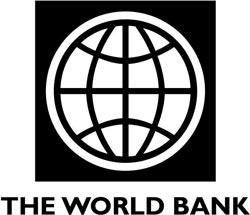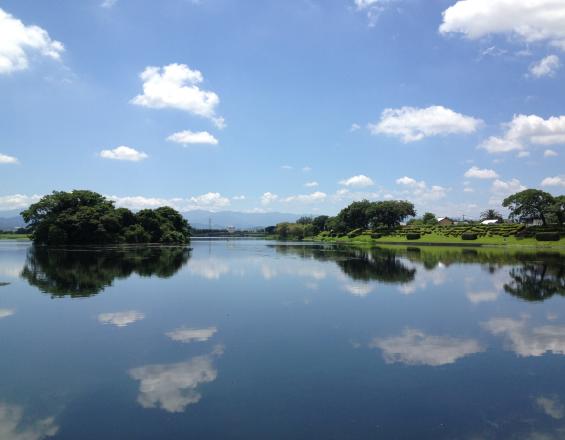
Governance of Underground Water

The Kumamoto region has benefited from abundant groundwater, which covers almost 100% of the total water supply. This was made possible mainly by the three following factors: 1) a large groundwater basin of approximately 600 km2, 2) easy infiltration and huge storage of rainwater due to unique soils layers developed by volcanic activities, and 3) relatively higher annual rainfall. However, the amount of groundwater has decreased in recent years due large part to increasing water consumption and lowering rainfall infiltration caused by urbanization. To manage and conserve groundwater resources in a sustainable manner, the group of more than ten municipalities in the basin developed a comprehensive plan to control groundwater. Also, a foundation sponsored by governments, companies, and residents financially supports various projects and research activities for groundwater conservation.
Context
Challenges addressed
By and large, groundwater management faces the following challenges:
- Groundwater management is not easy for municipal governments, because the groundwater is located across different municipalities and the groundwater itself is not traceable.
- Groundwater management is not fully stipulated in the law system in Japan. Groundwater is not explicitly specified as a common good by law, either.
- The recharging rate of groundwater is lengthy; therefore, it takes long time to recover once it is depleted or contaminated.
- It is still difficult to secure financial sources for management because underground layers are located across different municipalities.
In Kumamoto, the amount of groundwater has decreased due partially to relatively high water consumption amount per person and urbanization that loweres rainwater infiltration. In addition, the quality of groundwater has been deteriorating in some locations, where the concentration of nitrate exceeds the environmental standard.
Location
Process
Summary of the process
A groundwater management system embraces multiple administrative bodies. Governance of this system requires intergovernmental cooperation at the basin level and long-term commitment to conservation activities. Stipulating cooperation frameworks among multi-stakeholders in ordinances and comprehensive plans contributes to balancing the limited quantity of groundwater. It is also important to financially support this development frameworks in a sustainable manner with multiple stakeholders.
Building Blocks
Intergovernmental Collaboration at the Groundwater Basin Level
Even though the national law does not cover the groundwater system, the groundwater management has been governed through a series of ordinances, comprehensive plans, and action plans for more than 40 years. Groundwater Preservation Ordinances was established in 1977 for Kumamoto City and in 2001 for Kumamoto Prefecture. The city and prefecture governments jointly developed a comprehensive plan to control groundwater in 1996, incorporating collective input from 17 municipalities in the catchment area into the plan. Later, a second version of the plan in 2008 was developed by the group of 15 municipalities in the catchment, identifying four prioritized areas: 1) improvement of the balance of inflow and outflow of groundwater, 2) protection and improvement the quality of groundwater, 3) raising awareness of citizens for the conservation of groundwater, and 4) establishment of a common goal among stakeholders. A detailed five-year action plan was also developed the following year in order to implement mitigation measures in a timely manner.
Enabling factors
- Intergovernmental collaboration at the basin level for groundwater management
Lesson learned
Given the characteristics of groundwater, governance of groundwater management system requires intergovernmental cooperation at the basin level and their long-term commitment to the conservation activities. Moreover, region-wide plans should cover multifaceted aspects of groundwater management, including flood management, water utilization, environmental and ecosystem protection, culture and education, and economics while meeting various local needs and mobilizing diverse expertise.
Balancing Water Sources through Multi-stakeholder Collaboration
The ordinances and the master plan stipulate collaboration among relevant local stakeholders to establish a common system for conservation management. In line with the city ordinance, private companies that withdraw more than 30,000 m3 of groundwater annually are requested to form, implement and monitor a conservation plan. They also submit a report on the recharge of groundwater to follow the prefectural ordinance. Through this collaboration system, the governments have achieved multiple projects to recharge groundwater with involvement of different stakeholders. The prefectural government, for instance, took the lead in recharging groundwater by filling fallow paddy fields full of water in collaboration with farmland owners in upper basin region, agricultural cooperatives, and neighboring towns and villages. Furthermore, there are some companies participating in the projects as part of their Corporate Social Responsibility. Farmers are requested to use fertilizers and treat animal excrement properly in order to decrease the concentration of nitrate.
Enabling factors
- Multi-stakeholders collaboration among relevant stakeholders are stipulated in ordinances and a master plan
Lesson learned
Groundwater tend to be higher water quality but lower water quantity as a water source, compared to surface water source. Since the groundwater volume is limited, collaboration among various experts and stakeholders such as local citizens, academia, the private sector, NGOs, and local municipalities, has been effective particularly for properly managing withdrawal of ground water.
Financing Groundwater Management
The Kumamoto Ground Water Foundation was established by the City to financially support multiple projects and research activities aiming at groundwater conservation. The large part of the financial resource relies on contributions provided by the local governments and supporting members of private sector. The amount of contributions is determined in accordance with the amount of groundwater withdrawn by each government/company. The budget of the foundation used to promote activities for recharge, quality, and conservation of ground water. The Foundation also calls for cooperation from citizens and private companies in its own ways. Citizens and companies, for instance, can offset groundwater consumption by purchasing or consuming crops or meat grown in the groundwater recharge areas. The Foundation provides service to covert the amount of consumed product into the amount of water recharged by the consumption, and then issues a certificate that proves contribution to groundwater conservation. Companies can use this certificate to prove their efforts of conserving groundwater by attaching it to a report to be submitted to the prefectural government. Citizens and companies can also join their conservation activities by owing paddy fields in the recharging areas.
Enabling factors
- Foundation established by the city government
- Various mechanism applied by the foundation to conserve groundwater
Lesson learned
There are generally two ways to secure financing for local governments to conduct groundwater management in Japan. The first is to collect fees from users based on beneficiary-pays principle. The other is to collect as a form of tax for the conservation and recharging of groundwater. As in Kumamoto’s case, these kinds of funding can be used for groundwater monitoring, recharging activities, groundwater conservation activities, forestry conservation activities, and rainfall infiltration infrastructure development.
Impacts
Economic Impact: A special tax for water and forestry conservation generates a revenue of JPY 4,800 billion annually. Also, a project for recharging groundwater through paddy fields facilitated participation from the private sector. An agricultural association, a foundation, private companies, such as Sony Semiconductor Corporation and Yamauchihonten Umeya, provided the finance for the project.
Social Impact: Kumamoto prefecture has long promoted education for water conservation. As a result, awareness for water conservation has been enhanced in the region. For example, Kumamoto Prefecture came top at the national level in terms of the number of students who have made submissions to a water essay contest for the last 8 years. High awareness of groundwater conservation becomes the foundation of citizen’s participation in the creation of master plans and daily grass-roots efforts to save water in households.
Environmental Impact: Daily water consumption per person has decreased gradually every year since year 2005, when these water conservation activities began. Projects aim to reduce the water consumption per person to 218 liters per day. In addition, due to the “paddy field project”, the recharge of groundwater has been improved.
Beneficiaries
- Residents of 15 municipalities in Kumamoto region
- Private companies in Kumamoto region

